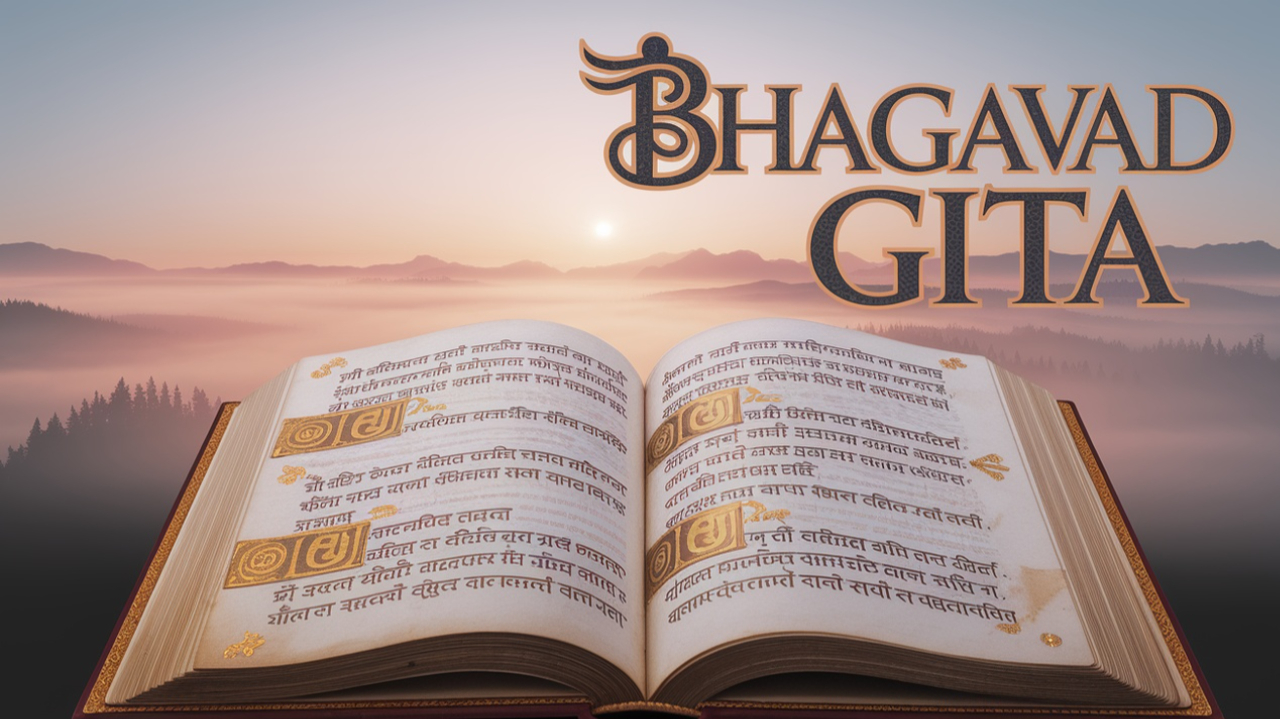
This comprehensive course offers an in-depth exploration of the Bhagavad Gita, its philosophical teachings, and its relevance in contemporary life. Participants will engage with the text through lectures, discussions, and reflective practices, developing a profound understanding of its core concepts and applying them to personal growth.
Course Levels
-
Level 1: Introduction to the Bhagavad Gita
This level introduces the historical and cultural context of the Bhagavad Gita, exploring its origin, significance, and structure.
-
Level 2: Fundamental Teachings
This level delves into the essential teachings of the Gita, focusing on concepts such as Dharma, Karma, and Yoga.
-
Level 3: Philosophical Perspectives
This level examines the philosophical dimensions of the Gita, exploring its metaphysical and ethical implications.
-
Level 4: Practical Application
This level focuses on applying the teachings of the Gita to contemporary life and personal development.
-
Level 5: Advanced Interpretations
This level explores various interpretations and commentaries on the Bhagavad Gita, highlighting different schools of thought.
-
Level 6: The Gita in Global Context
This level examines the influence of the Bhagavad Gita on global philosophies, religions, and cultures.
-
Level 7: Reflective Practices and Meditation
This level combines the teachings of the Gita with practices aimed at personal reflection and spiritual growth.
-
Level 8: Capstone Project
This culminating level requires participants to synthesize their learning and demonstrate their understanding through a final project.
Course Topics
-
The Concept of God in the Gita
# The Concept of God in the Gita The Bhagavad Gita, a 700-verse Hindu scripture that is part of the Indian epic Mahabharata, presents a profound exploration of the nature of God (Ishvara) and the rel...
-
The Law of Karma: Actions and Consequences
# The Law of Karma: Actions and Consequences The Law of Karma is a fundamental concept in the Bhagavad Gita and serves as a guiding principle for understanding the relationship between actions and th...
-
The Gita's Place in Indian Philosophy
# The Gita's Place in Indian Philosophy The Bhagavad Gita, often referred to simply as the Gita, is a 700-verse Hindu scripture that is part of the Indian epic Mahabharata. It is set in a narrative f...
-
Core Themes and Concepts
# Core Themes and Concepts in the Bhagavad Gita The Bhagavad Gita, a 700-verse Hindu scripture that is part of the Indian epic Mahabharata, presents a conversation between Prince Arjuna and Lord Kris...
-
Introduction to Yoga: Paths to Liberation
# Introduction to Yoga: Paths to Liberation Yoga, as outlined in the Bhagavad Gita, is a profound spiritual practice that leads to liberation (moksha) from the cycle of life and death (samsara). The ...
-
Key Characters: Arjuna and Krishna
# Key Characters: Arjuna and Krishna The Bhagavad Gita, a 700-verse Hindu scripture that is part of the Indian epic Mahabharata, introduces us to two pivotal characters: Arjuna and Krishna. Their dia...
-
The Nature of the Self (Atman)
# The Nature of the Self (Atman) In the teachings of the Bhagavad Gita, the concept of the Self, or Atman, is a fundamental aspect of understanding one's identity and purpose. Atman is often translat...
-
Historical Context of the Bhagavad Gita
# Historical Context of the Bhagavad Gita The Bhagavad Gita, often referred to simply as the Gita, is a 700-verse Hindu scripture that is part of the Indian epic Mahabharata. It is written in the for...
-
The Structure of the Gita: Chapters and Verses
# The Structure of the Bhagavad Gita The Bhagavad Gita, often referred to simply as the Gita, is a 700-verse Hindu scripture that is part of the Indian epic Mahabharata. It is a dialogue between Prin...
-
Understanding Dharma: Duty and Righteousness
# Understanding Dharma: Duty and Righteousness Dharma is a central theme in the Bhagavad Gita, representing the moral and ethical duties that govern individual behavior. In this lesson, we will explo...